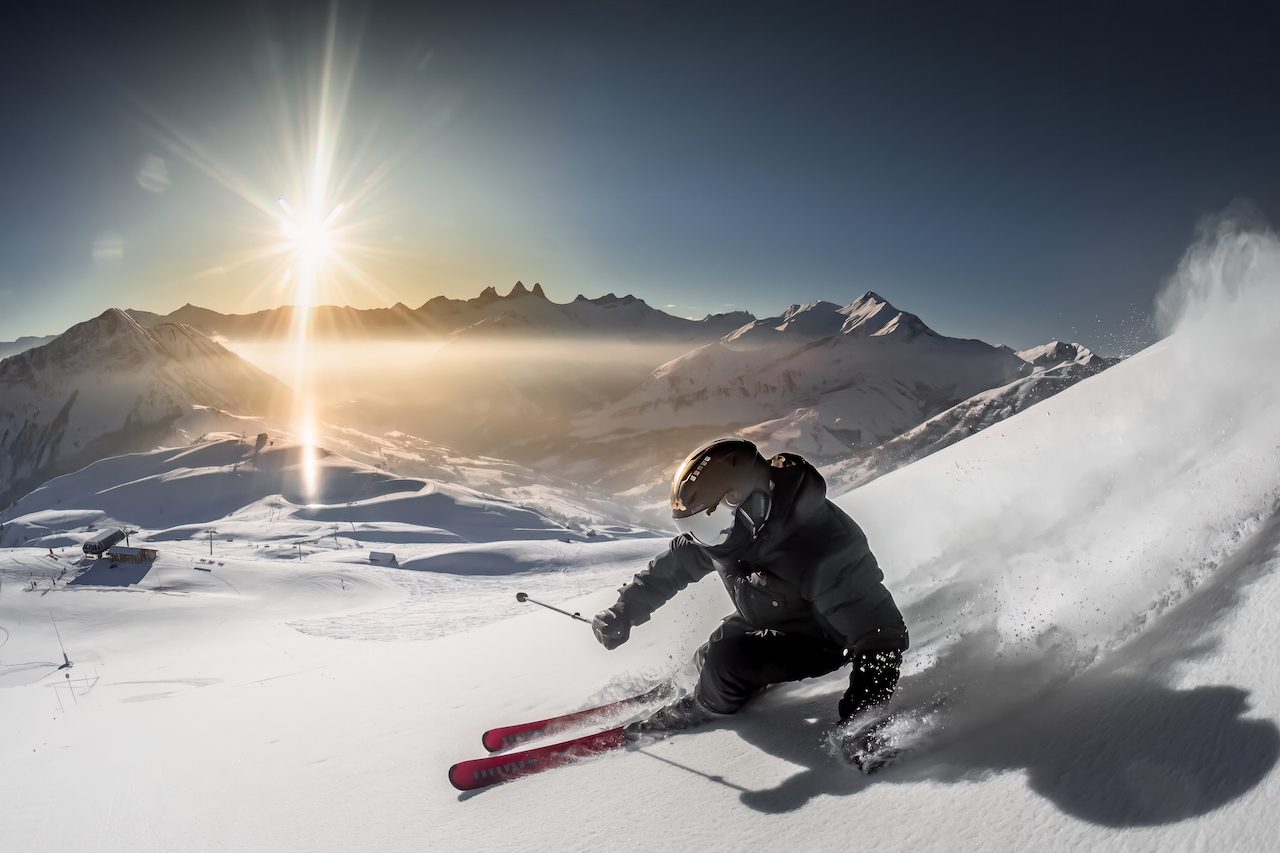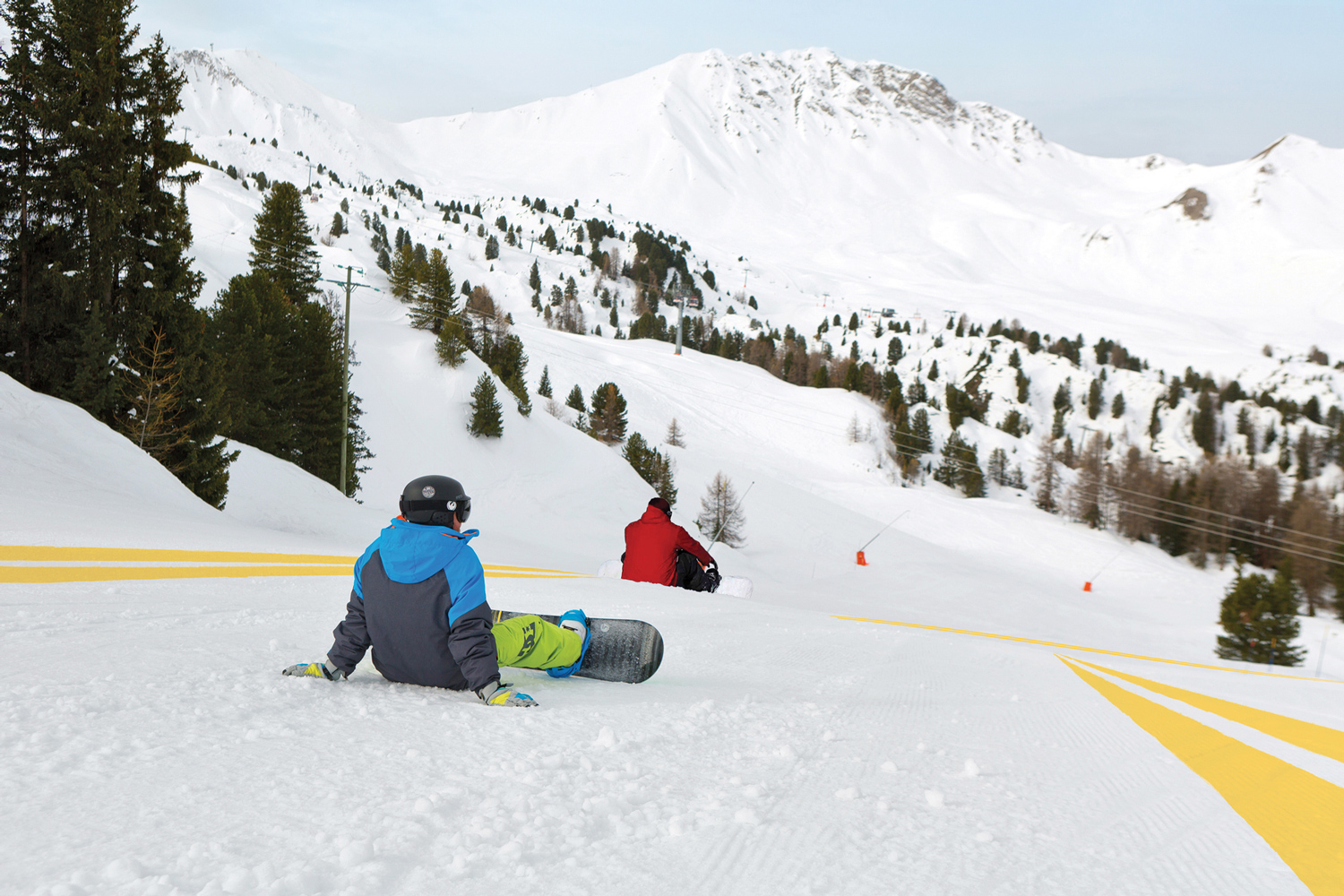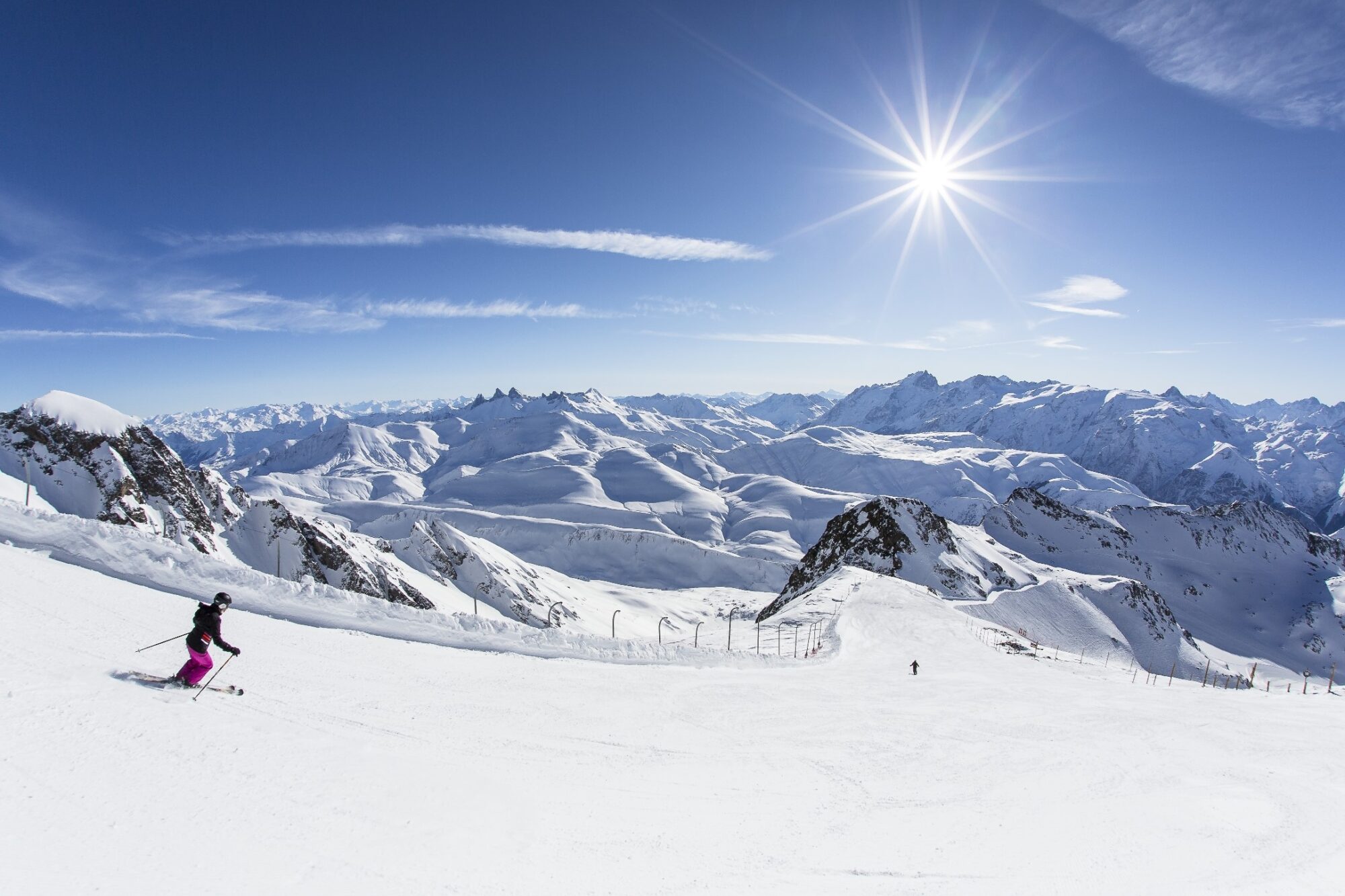I’ll admit it—when I arrived in Saint Sorlin d’Arves, I wasn’t exactly buzzing. The village was blanketed in fog, the surrounding hills were brown and patchy, and—from a distance—it felt more like a forgotten farming outpost than the gateway to one of the biggest ski areas in France.
But that’s Les Sybelles for you—a resort of contrasts, surprises, and quietly vast terrain. While claiming to be the fourth largest ski area in France (and seventh in Europe), it barely receives a whisper in most British ski circles. Spanning six interconnected resorts and 310km of pistes, the chances are you’ve never heard of it. And that’s kind of the point.
Unlike the bigger-name Alpine spots, Les Sybelles doesn’t shout for attention. It reveals itself gradually—through quiet lift connections and long descents. It wasn’t until a brief tear in the cloud over lunch the next day that I got my first real sense of the scale—valleys stretching out in all directions, the six resorts linked by broad, snow-covered shoulders. The views would get even better, but for the first time, I started to understand just how much space there was to explore.

Les Sybelles was created in 2003, the vision of local entrepreneur Gaston Maulin, who wanted to unite six small, local resorts into a single, more competitive domain. It’s a ski area built for the French—particularly families—and you can still feel that in the layout: fast lift links, a central meeting point at 2,431m, and long, accessible runs ideal for intermediate cruising. But in other ways, it’s deeply traditional. I was based in Saint Sorlin d’Arves, one of the more characterful villages, where old stone houses still have hay stored in their upper floors and tiny wooden granges once used for livestock dot the edges of pistes.
Skiing wasn’t my first port of call that evening, though. Instead, I was met by a lively group of mountain dogs. Cani-rando—normally a sled-based activity—becomes a dog-powered hike when spring conditions take over. I clipped into a bungee harness attached to a husky and set off across the snowy fields as the sun dipped. The company keeps 32 Nordic dogs, most of them huskies, and all full of energy. Mine was called Apash and he kept me walking at a pace.

I passed old stone barns at Les Prés Plan (1640m), their wooden upper floors once used to store hay, with cattle stabled below—the animals’ body heat helping to warm the structure through the depths of winter. One of the barns leaned slightly in the evening light as if settling into the hillside after a long century of use. Opposite was the Chapelle Notre-Dame-de-la-Vie, built in 1671 and restored in the 1850s. Its window frames were carved with fleurs-de-lys, Savoy crosses, and weather-worn faces—an unexpectedly rich slice of Maurienne Valley heritage—and, paired with the soft padding of husky paws, it was a quietly magical introduction to the valley.
The following morning, I joined the piste security team for “First Tracks” before the lifts opened, following them through the haze. Pisteur Xavier Gaboriaud, who’s been doing this job for over a decade, explained how they patrol each morning, using controlled charges to prevent avalanches, checking snow quality, and even resetting piste markers.
“There are twelve of us across the ski area,” he told me, “and some mornings we’ll set off five or six explosions.” I asked if pisteurs have to pass the same kind of speed tests as French ski instructors. “It’s not about speed,” he said. “It’s about control.”

After skiing first tracks, I carried on in what our ESF instructor Aurelien politely called “interesting visibility.” The skiing was cautious, careful, and largely guesswork. At lunch, at Les Aiguilles X Folk Kitchen near the Vadrouille chairlift, I nearly ate inside after the morning gloom. But then something changed. The weather cleared just enough to tempt me back out—and the flat light began to lift, revealing long, open pistes I hadn’t even realised I was skiing through. It wasn’t full sun yet, but it was enough to change the mood entirely.
I spent the afternoon exploring the slopes around Saint Sorlin, which turned out to be a highlight of the trip—wide, flowing pistes with barely anyone on them, and views that stopped me in my tracks. Some of the other resorts in the domain—like Le Corbier and La Toussuire—have a slightly boxy, retro 60s feel. But Saint Sorlin feels more like the “real” Alps: rustic chalets, stone houses, and a lived-in, agricultural atmosphere. It’s all very French, very local, and very refreshing.
Later, I traversed past Col de la Croix de Fer and caught glimpses of Col du Glandon and the Glacier de l’Étendard. “People don’t know this place yet,” Aurelien told me. “It was always built for the French, for families. But now we want to open it to the UK and international skiers.”

At the end of the day, I returned through the heavy slushy snow to Chalet Beausoleil, a huge, sunny, chalet-style apartment right at the bottom of the piste in Saint Sorlin. The chalet lives up to its name with bright, open rooms and balconies that catch the best of the day’s light. I refreshed my tired legs in the jacuzzi, which offered the perfect view across the mountains. I don’t usually ski for an entire day.
The food and drink here matched the scenery for surprises. Dinner at Hors Piste, a modern Alpine bistro in Saint Sorlin, featured Japanese-style steak tataki, a grilled beef fillet flambéed with eau de vie at the table, smoked pork tenderloin cooked over applewood, and seabream ceviche. The wine list came with a gadget that let you choose how long your bottle had been aerated—zero, six or twelve hours—depending on how open and fruity you wanted it. I had a Ginger Mojito to start: sharp, fresh, and exactly what I needed after a day on the mountain.
Les Cèdres Restaurant, where I ate the following night, offered more traditional fare. I went for the pork filet mignon, while others tucked into bubbling raclette. I rounded off the meal with a cocktail called the “Tout Schuss”—a sparkling mix of Genépi Dolin, peach, Angostura bitters, and fizzy water.
The next morning began much like the others—foggy and dim in the village. But this time, I’d checked the webcam. I knew the sun was waiting for me up high. Sure enough, the lift broke through the clouds and I emerged into blazing light, surrounded by a sea of white peaks.
From the top of the lifts above Saint Sorlin (around 2,620m), I finally had the full panorama: the Aiguilles d’Arves in all their glory. “The one on the right looks like a cat’s head,” said Marie Lourdel from Les Sybelles Tourism. “Two little ears, watching the valley.” Far to the left, Mont Blanc shimmered on the horizon—my clearest view yet, and worth the wait.
As I lapped the Saint Sorlin ski area, I was amused by the unusual lack of mountain restaurants. “It was too wild up top when they created the domain,” explained Marie. “So most of the mountain eateries were built lower down.”
But there’s Le Cailin in the Toussuire sector, which stood out for its good-value, homemade food. In Saint-Jean d’Arves, there’s even a piste-side food truck converted from an old snow groomer—a slope-side snack spot with a panoramic view.
So it seemed typical that, like English buses, two popped up at once. Just by the 3 Lakes chairlift, I stumbled across a pair of piste-side bars right next to each other. I stopped at Le Saint S’O for a hot chocolate and sank into a deckchair in the sun. A man dressed in full Alpine garb played the accordion—oddly Austrian-sounding music in a very French setting, and all the better for it.
Toilets deserve a mention too. At the top of many lifts, you’ll find small, pyramid-shaped wooden huts offering what might be the most scenic “loo with a view” experience in the Alps. Basic, yes—but wonderfully functional and perfectly blended into the landscape.
One area I couldn’t stop thinking about was the Glacier de Saint-Sorlin. From above the Longe Combe blue run, I spotted a few ski touring tracks cutting across the snow near a frozen lake, heading toward the Aiguille de Laisse and the Bramant Glacier. The terrain looked wild and open, but also safe and inviting—ideal for mellow touring, with plenty of potential for longer missions. I’m already plotting a return trip with skins.
Les Sybelles is also looking ahead in other ways. The resort aims to be carbon neutral by 2037. The lifts already run on 100% renewable electricity, they’re trialling hydrogen-powered piste bashers, and there’s a long-term rewilding plan underway to restore areas affected by infrastructure work.
As I soaked in the jacuzzi on my last evening, I couldn’t help wondering why more Brits don’t ski here. Maybe they will, soon. But for now, Les Sybelles remains a quietly impressive giant—affordable, surprising, and full of stories just waiting to be uncovered.
(all images except top pic credit Katy Dartford)




